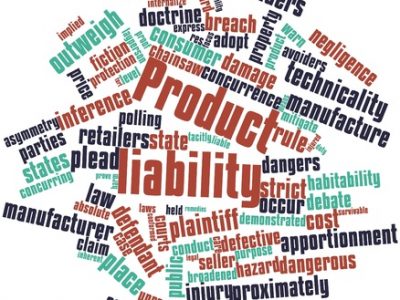

Breaking Down the Steps of a Personal Injury Trial
While 95 percent of U.S. personal injury cases are settled in the pre-trial phase, for those with a case that will move to trial it is good to understand how a personal injury trial works. Personal injury laws vary from state to state but the main phases of a trial are more or less the same across the board.
Breaking down the steps in a personal injury trial
Personal injury attorneys typically make every effort to settle personal injury claims without going to trial. A case is started with an investigation of the facts, followed by presenting a settlement demand to the defendant. A settlement demand gives the accused a chance to settle the case by fair payment without having to go to a trial. If this process does not settle a case, the parties can try to settle through mediation. If mediation fails, the next step would be to file a lawsuit with the court and have the court set a trial date. If the case goes to trial then the following six phases take place.
Step #1: Choose a jury
The majority of personal injury trials are tried before a jury. The jury is selected by the judge after a round of questions is posed to potential jurors by the judge and the plaintiff and defendant through their attorneys. The judge will excuse any potential jurors whose personal ideological predispositions or life experiences may preclude them from being fair jurors for the particular case. Both the plaintiff and defendant may also exclude a certain number of jurors through use of “peremptory challenges” and challenges “for cause.”
Step #2: Opening statements
Opening statements are made by the attorneys representing the plaintiff and the defendant. The plaintiff’s attorney typically goes first because they must show the defendant’s legal liability for the plaintiff’s injuries including an explanation of the defendant’s alleged role in the plaintiff’s injuries. As a result, the plaintiff’s opening statement is typically longer and more detailed that the one given by the defendant’s attorney. The defendant’s attorney then presents its own interpretation of the facts and sets up the rebuttal for the plaintiff’s key evidence.
Step #3: Witness testimony and cross-examination
In a personal injury trial, key evidence and arguments presented to the jury are often called the “case-in-chief.”
- The plaintiff presents their evidence including witnesses and experts who are called to testify; physical evidence is introduced. The goal is to convince the jury that the defendant should be held legally liable for the plaintiff’s injuries and damages.
- The plaintiff – the party who called the witness to the stand – questions the witness through a method called “direct” examination. When this is complete, the defendant – the opposing party – tries to discredit the witness or expose weaknesses in their argument through “cross-examination” questions. After cross-examination the plaintiff has a second opportunity to question the witness through “re-direct examination” in order to fix any of the holes poked in the case through cross-examination. The plaintiff “rests” their case.
- The defense attorney now presents their own evidence for their “case in chief.” The goal of this evidence is to prove that the defendant is not liable for the plaintiff’s injuries. Witnesses may be called and questioned in the same way as those called by the plaintiff. Once the defense has “rested” then the plaintiff has a chance to respond through a “rebuttal.”
Step #4: Closing arguments
Closing arguments are the final chance for each attorney to speak to the jury. They use the opportunity to sum up the case and recap the evidence they presented during witness testimony in an effort to convince the jury to decide in their client’s favor. The plaintiff tries to show why the evidence obligates the jury to find the defendant liable for the plaintiff’s damages while the defendant tries to show that the plaintiff has not established the defendant’s liability in the case.
Step #5: Jury instruction provided by judge
During jury instruction the judge discusses and hands the jury the set of legal standards – previously agreed to by the judge, plaintiff and defendant – that it will need to decide whether the defendant should be held accountable for the plaintiff’s alleged damages.
Step #6: Jury deliberation and verdict
The jurors consider the case through a process called “deliberation,” attempting to agree on whether the defendant should be held liable for the plaintiff’s claimed injuries, and if so, the appropriate reparation for those injuries. Deliberation is meant to be a methodical process that can last hours or weeks. Once the jury reaches a decision, the jury foreperson tells the judge, and the judge typically announces the verdict in open court. Most states require 10 out of 12 jurors to agree on a verdict in personal injury cases. A mistrial may be called if the jury is unable to reach a sufficient majority verdict. When a mistrial is called then the case may be dismissed or begin again at the jury selection stage.
If you or a loved one is dealing with an accident or injury through no fault of your own, you have enough on your plate. Let an experienced accident attorney fight for the full compensation that you deserve. It is not uncommon to receive a settlement from the insurance company that is five to ten times bigger with the help of a lawyer. Call the caring accident attorneys at Tario & Associates, P.S. in Bellingham, WA today for a FREE consultation! We have been representing residents of Whatcom County, Skagit County, Island County and Snohomish County since 1979. You will pay nothing up front and no attorney fees at all unless we recover damages for you!




